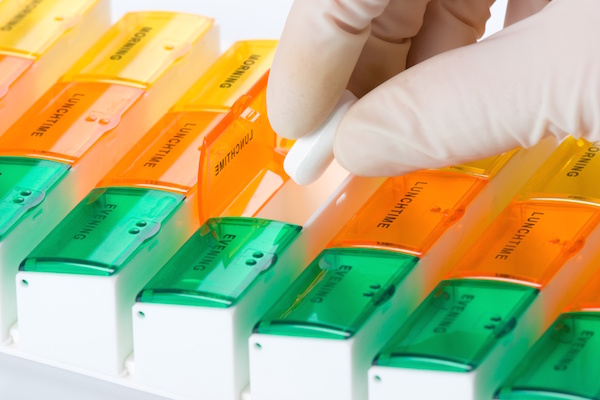
THURSDAY, Nov. 10 (HealthDay News) — In 2009, nearly 15,000 American women and men ended up in an emergency room after being unwittingly, but intentionally, drugged by someone else, a new federal report reveals.
According to the data, about 60 percent of these cases occurred after someone surreptitiously slipped a drug into the victim’s drink.
Details outlined in the Substance Abuse and Mental Health Services Administration (SAMHSA) report — touted as the first of its kind — suggest that the problem extends to a broad section of society.
For example, nearly three-quarters of intentional poisonings involved individuals over the age of 21. And though the majority of cases involved females, nearly four out of every 10 victims was male.
“This is not an epidemic, but it is a serious situation,” said Peter Delany, director of SAMHSA’s Center for Behavioral Health Statistics and Quality. “That means there are a lot of people who end up in the emergency room because a drug was given to them — stimulants, cocaine, Ecstasy, anxiety drugs — without their knowledge.
“So if you’re in a situation where there’s drinking and drug use going on, you need to keep an eye on things and pay attention,” he added.
The SAMHSA researchers said there is a multitude of motives behind intentional drugging.
On the one hand, such poisonings have been implicated in the rapes of an estimated 3 million American women, although in reality that figure could be considerably higher. The problem, the report authors pointed out, is that not everyone realizes they have been drugged, recall can be spotty and the intent of the perpetrator can sometimes be difficult to discern.
What’s more, intentional drugging is not solely about sexual assault, since victims can instead be targeted for robbery or injury.
To get a handle on the number and nature of intentional poisonings across the United States, SAMHSA analyzed data collected by its Drug Abuse Warning Network (DAWN) surveillance system.
The team focused on the year 2009, looking at events unfolding in the nation’s ERs.
Among the findings:
- Of the estimated 4.6 million drug-related visits to the ER in 2009, 14,720 were the result of intentional poisonings. The vast majority of patients (84 percent) were treated and released without hospital admission.
- Roughly 60 percent of the cases involved drugs that were never identified, investigators noted, and 37 percent of cases involved a mix of alcohol and an unidentified drug. Nearly 20 percent of cases involved just unidentified drugs, while another 7 percent involved a mix of unidentified medications and identifiable illicit drugs.
- Overall, more than two-thirds of visits were chalked up to a mix of more than one drug, while three in five cases involved a mix of alcohol and drugs.
- Almost one-third of cases involved the use of illicit drugs, including pot, cocaine, Ecstasy and a range of stimulants. By contrast, about one-fifth of cases involved the use of prescription medications, such as pain relievers and anxiety/insomnia drugs.
The SAMHSA team noted that women accounted for 63 percent of victims.
Based on the findings, the report authors suggested that an effort needs to be made to raise public awareness of the problem, particularly with respect to the elevated risk present in public settings (such as bars and dance clubs) where alcohol and drugs are prevalent.
“This is an educational issue,” said Delany. “People do stupid things to people. So this is really a prevention issue. We’re never going to stop it 100 percent. But we can help by really reaching out to the community and to young adults to say ‘Look, when you go into these situations it can be dangerous.’ “
Dr. Michael Brodsky, a psychiatrist at the University of California, Los Angeles’ David Geffen School of Medicine and medical director of the private Southern California-based behavioral practice called “Bridges to Recovery,” described the report as “concerning.”
“Now, they’re talking about a relatively small proportion of all the emergency room visits for intoxications of any kind,” he noted. “On the other hand, I don’t want to be alarmist but this is 15,000 visits for intentional poisonings. That’s about five a day. And it seems there a quite a lot of motives for doing this. It’s not just women being given date-rape drugs. There is a risk for both men and women.
“And I also wonder if these numbers are actually an underestimate,” Brodsky added. “Because younger people under the age of 21 — say, bystanders at a fraternity or dorm who come upon an underage student who is passed out — are less likely to call for an ambulance or health care personnel in these kind of situations, because they don’t want to be implicated. So there may be many more serious examples of this that don’t end up in the ER.
“Either way, not only do people need to make sure that someone doesn’t stick something in their drink,” he said. “They should also be careful if someone says ‘Here, try this pill,’ because a large percentage of these poisonings are tied to prescription drugs. Sometimes with alcohol, sometimes not. So, people need to be awfully cautious all around.”
More information
For more on poisoning, visit the U.S. Centers for Disease Control and Prevention.

